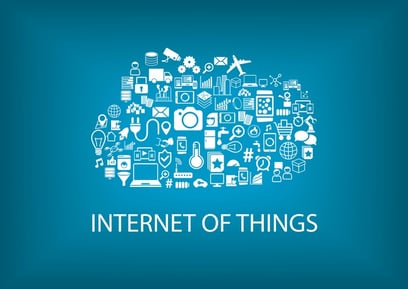INTERNET OF THINGS: THE SKY IS THE LIMIT, OR IS IT?
With cloud computing being arguably the hottest trend in the digital world right now and context rich systems being a very close second there is a paradigm shift about to take place in the world of technology as we know it. The Internet of Things (IoT) revolves around increased machine-to-machine communication that is built on cloud computing along with networks of data gathering sensors; It is an instantaneous connection that will make everything in our lives from streetlights to cities “smart.” The Internet of Things really becomes powerful with machines and sensors working together in order to gather and leverage data by analyzing it in real time. Cloud based applications are essential to interpreting and transmitting the data coming from these sensors.

So now both individuals and businesses are starting to wonder how the Internet of Things can be applied to them and their industries. What are the advantages? Will it make them more efficient? What are the cost savings? Ever since people began bringing more and more internet-connected devices into their homes and businesses, the existence of personal ecosystems has started to form, and the subsequent usefulness of context-rich systems is becoming more apparent. We now have smart phones, thermostats, cars, watches, cameras, lights and the list goes on. Now that these devices are starting to interact with one another and some are also semi-aware of the environment around them, automated decisions are now being made, most of which used to require human interaction. The possibilities are endless!
Imagine leaving work one night and you are the last one out of the building. As you set the alarm and walk out of the building the security system triggers the smart lights to shut off and with the lights off the thermostat now adjusts the temperature accordingly. Your car senses you are within a 30 foot proximity and starts the engine. On your ride home sensors in the smart asphalt on the road ahead of you communicate to your car letting it know there is ice forming and your car automatically slows downs when it reaches that point. As you pull in your driveway your car communicates with your home automation system letting it know to open the garage door, turn the house lights on, adjust your thermostat and turn on the evening news.
The above scenario is a very specific scenario but, you can only imagine the implications of smart cars communicating with smart city grids that affect smart traffic lights, which in turn optimizes traffic flow patterns and road conditions. By making things intelligent, it’s going to be a major catalyst for creating new products and new services. Beyond user experience, businesses will see overall improvement with almost real-time, context-rich results that will drive swift decision making and better operations control.
There is no doubt that the Internet of Things is going to be a culture shift but, more importantly, it is going to be an evolution, not a revolution.

